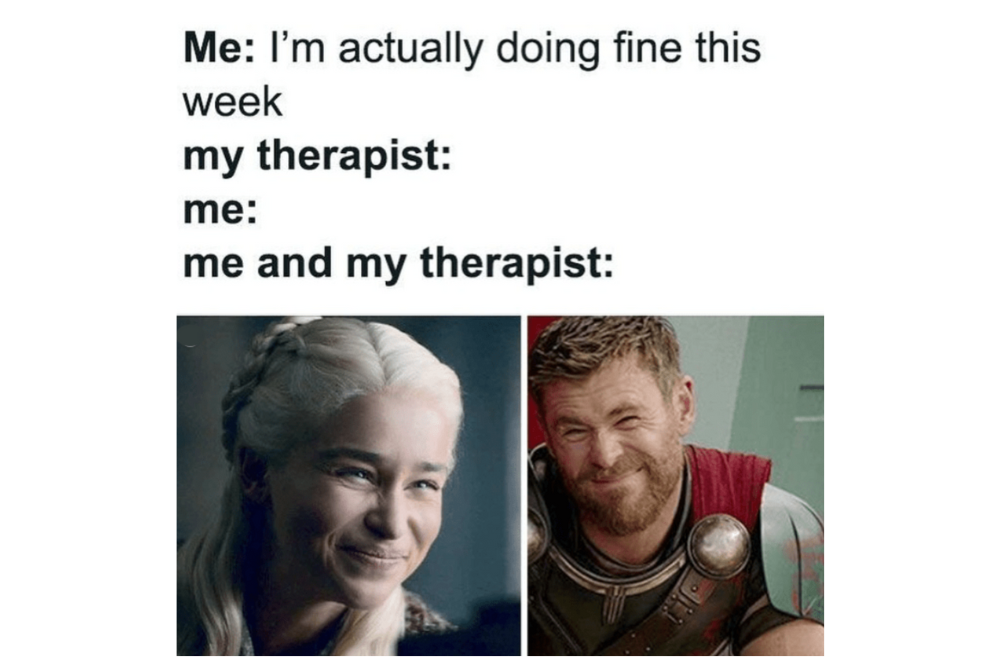Choose Your Own Beginning: The Art of Starting a Session
The office door opens, the zoom screen loads, someone turns their camera on, pleasantries are exchanged…And what happens next?
Starting therapy sessions can be awkward. Even long-term therapeutic relationships can feel hesitant again when one chapter of work closes and the next has yet to begin. Some mental health settings are more formal, where every session may begin with a review of symptoms. With drama therapy, I like to think that you can Choose Your Own Adventure.
The in-person vs. virtual setting will surely impact how a session unfolds. In person, we can witness and be witnessed with our whole bodies, and experience all of the great and chaotic bodily felt senses and kinesthetic energy that reminds us that we are human.
As a client, you may wonder, “Which seat am I supposed to take? Can I see a clock? Can I hear anything in the hallway (or, can anyone hear me?!) Am I distracted by something out the window? Is there a window??” Our body language conveys so much, and it is a rich source of information in a therapeutic setting.
If the session is virtual, we may lose the full effect of kinesthetic reaction, but we gain another form of intimacy: the personal/localized environment. The therapist and client get to peer into each other’s lives, as the video screen itself facilitates the exchange.
Once the players are at their starting places, there may be an awkward moment of silence. That is ok. Ultimately, it is up to you the client to decide where the session goes. But, sometimes, we don’t know where to start!
Luckily, we have some options:
If you are unsure of how to begin, it is so incredibly helpful to say just that. “Hey, I don’t know where to start…” This way, the therapist can offer some creative interventions based on what they are observing to help ground a client into the moment. A drama therapist can offer that the client start with breathing and grounding techniques, art supplies to allow the client to depict their emotional landscape, or utilize projective tools (masks, scarves, toys) and/or roles to encourage the client to shake up their perspective. Many of these techniques carry over into the virtual setting, or have their virtual-setting equivalent. For example, the therapist may ask the client to share a meaningful object in their home, play a song that represents how they are feeling, or encourage the client to get up and walk around their own space and notice what it feels like.
As the therapeutic relationship grows, the client will hopefully feel more empowered to make the request right off the bat, “Hey, I’d like to start with a wiggle and making a weird sound,” or “Can we get the scarves out?” Lately, my clients have been requesting to start with a song choice, and stretching/breathing exercises.
Keep in mind: drama therapists are also ok with just talking! Sometimes clients come in warmed-up to a subject and know exactly where they want to start. It is my job as the therapist to clear the way and let the client get those thoughts and feelings out in the air.
Drama therapy lets us acknowledge in a playful way that starting a session might be awkward, and provides creative options for establishing a comfortable enough space to approach difficult subjects. At the end of the day, this is your treatment–you have the power to shape the session to serve you.

